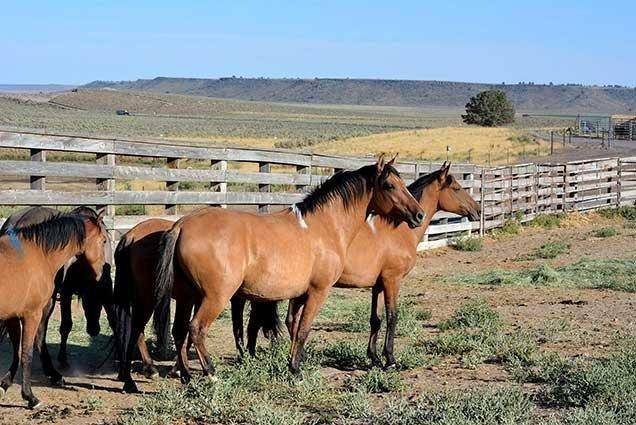By Julie Johansen
Ninety-two percent of land in Emery County is owned by the federal government; i.e.: BLM, Forest Service, SITLA, DWR. However, anything that happens on those millions of acres affects all of the county’s citizens with economic impact as well as aesthetic appreciation of the environment.
In 1971, the Wild Horse and Burro Act gave the federal government the responsibility to manage herds of wild horses and burros, mainly through the BLM. Underfunding and mismanagement charges have plagued the BLM since the act was put into place.
In 2010, many of the charges of 1971 act were changed because of public clamor. The herds protected by this act have increased from 45,000 head in 2014 to over 75,000 today. This is an ongoing increase of 15-20% each year. The large numbers of horses and burros on the range are literally eating themselves out of house and home. Mortality and malnutrition rates are astounding.
There are, however, also nearly 50,000 horses in various holding facilities. The horses in these holding facilities are placed for adoption but this results in very small decreases in the numbers housed in these facilities. The cost is between $45,000 and $50,000 to hold a horse in these facilities for life, resulting in millions of dollars for taxpayers. Congress established a National Resource Committee in 2011 to study these issues and find a scientific solution. Their solution stated that addressing the problem immediately with a long term view in mind is more affordable and satisfactory than continuing to remove animals to long-term holding facilities.
Critics say that the round-ups are aggressive and unnecessary. They feel that the animals are unfairly restricted and confined to little public lands. Others call for reduction methods such as contraceptives, more aggressive adoption programs and creation of sanctuaries. Some suggestions have been made to process the animals for use as protein in diets for zoo animals, dogs or even human consumption. None of these methods have been utilized and processing is unlawful. The situation is in crisis mode between animal welfare and animal rights.
In 2013, BLM permittees received a letter asking them to volunteer to reduce their AUMs (animal units) by 50% because of drought conditions and overgrazing. Permittees felt this was directly caused by overpopulation of wild horses and burros. This would have required most of them to liquidate their herds and end their livelihood. Permittees organized and filed a lawsuit against the BLM in 2014. At the time, there were 19 different suits filed. Today, only the one in Utah remains active.
Conservationists say that the public range lands are being depleted to the point that they will have to be reseeded. Horses and burros forage differently than a cow or other wildlife. Cows and other wildlife graze off while a horse pulls, uprooting the plants. This leaves no revegetation for next year and destroys the visual effect of the desert. A broad spectrum of public opinion in the Western United States states that there is relevance to move forward with improving management of wild horses and burros on public lands.
Why should we care? First, of all the permittees are our neighbors and fellow citizens. These problems exist here in the San Rafael Desert as well as on all public lands and our tax dollars pay for all these programs. There is no easy solution and probably not one that will please everyone. But, even the longest journey must begin where we stand.

